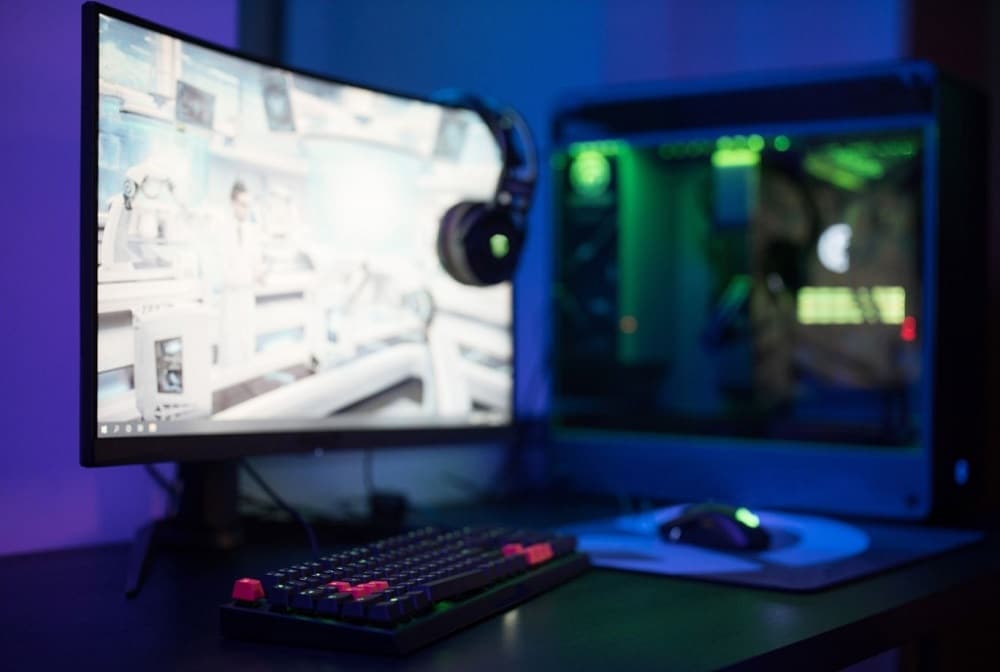Is An Ips Monitor Good For Gaming (Tn Vs Ips Vs Va: Which Is Best For Gaming)?

One of the biggest and most important parts of monitor design is the panel type used by the monitor itself, and this will have an enormous impact on the performance capabilities of the monitor in question, affecting everything from how well it displays different colors, to how many colors its capable of producing, to its response time and how wide the viewing angle for the display is. There are also considerations about issues such as backlight bleed and latency, and all of these different factors and issues play a huge role in the final quality of a monitor.
There are three main types of panel technology used in gaming monitors today and these are; IPS panels, TN panels and VA panels.
Each of these different types of panel has an array of pros and cons, but many people aren’t aware they even exist, or how much of an impact they will have on your monitor and gaming experience.
Generally the two most popular types of panel are the IPS and TN panel types, both being very popular with very different types of gaming.
However recent advances in technology have made IPS panels the favorite among most gamers today, especially gamers who don’t play competitive games or at the highest levels of professional esports competition.
That being said, TN panels are still very widespread and are preferred by those who play competitive fast paced games.
In this guide we’re going to take an indepth look at why this is the case, and explain this reasoning to help you make an informed decision. We’re going to take a look at each of these panel types and highlight some of their key features and pros as well as their drawbacks to help you make sure you get the performance you deserve out of these high performance displays.
IPS Panels
IPS panels are some of the most popular panels and provide the best performance in terms of color accuracy and viewing angles.
For a long time these were a great option for gamers who enjoyed single player games and wanted the best visual fidelity possible, and who weren’t worried about the slightly higher response times and latency that older IPS monitors suffered from.
However recently IPS panels boast response times comparable to TN panels, and so they are now one of the go to options for gamers who want great visuals and competitive response times, and are being used increasingly by the leading brands for their flagship gaming monitors.
While IPS panels are currently in a great place and they do provide excellent performance compared to other panel types, there is one caveat, and this is that IPS panels can still suffer from significant backlight bleed.
What is backlight bleed?
Backlight bleed is an undesirable occurrence in monitors when a dark scene or black screen is affected by the very visible backlighting that occurs, illuminating the corners or edges of the screen significantly, making dark shots hard to see and severely affecting the gaming experience in atmospheric or darker environments.
The amount of backlight bleed a monitor suffers with can vary between individual units and if you notice a significant problem with this it’s best to return your product and seek a replacement or get a full refund.
Despite this however, IPS panels are currently considered the best compromise in gaming monitors, between visuals and performance.
TN Panels
TN panels were the kings of the gaming world for a long time, particularly for players who enjoy fast paced shooters and multiplayer games where higher FPS and low latency can make all the difference to your performance.
TN panels offered 1ms response times before most other monitors and while IPS panels have recently gotten their latency down to this level, many people still prefer TN panels due to their reputation for excellent low latency.
TN panels also suffer from less backlight bleed than IPS panels which can make blacks more whole and complete.
However TN panels have issues, one of the main ones being a slightly worse color accuracy, and a somewhat washed out look to them compared to IPS monitors.
While color accuracy on these monitors can be improved with tweaks, out of the box you will notice a huge difference using a TN panel if you’ve been used to the colors of an IPS monitor.
That being said, TN panels are constantly improving this and just as IPS panels have closed the gap in terms of latency, TN panels continue to provide better color performance, however they will almost never be able to meet the same standard as IPS panels.
TN panels also have a very narrow viewing angle and aren’t a great choice if you plan to sit far away from your monitor or use it at an angle.
VA Panels
VA panels are a sort of compromise between IPS and TN panels, offering decent performance, including deep blacks and high contrast, however they suffer from worse viewing angles than IPS panels.
They offer a good experience in terms of latency speed and color representation, the only problem is that monitors using this technology are not that popular and you may struggle to find offerings that come with additional desirable features such as G-Sync or Freesync which a lot of IPS panels and TN panels offer these days.
